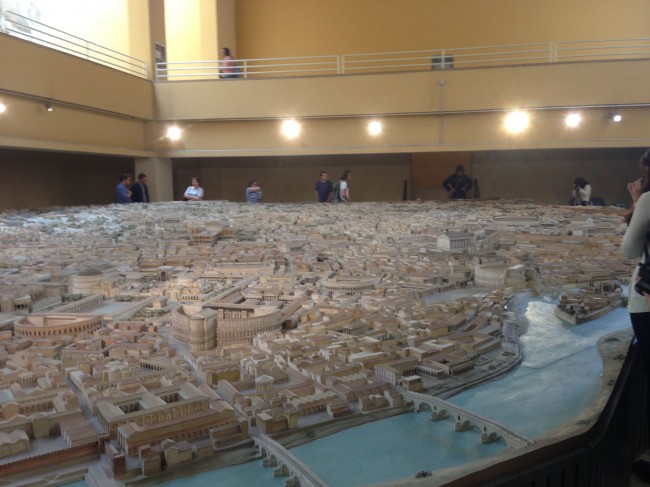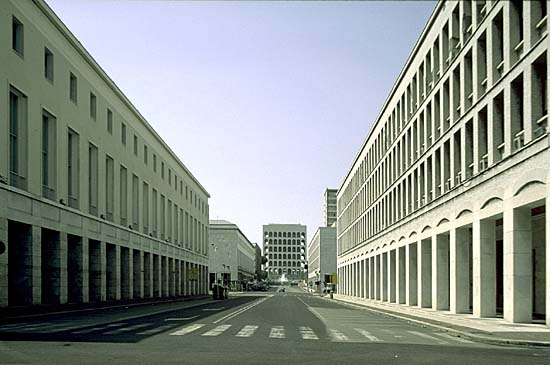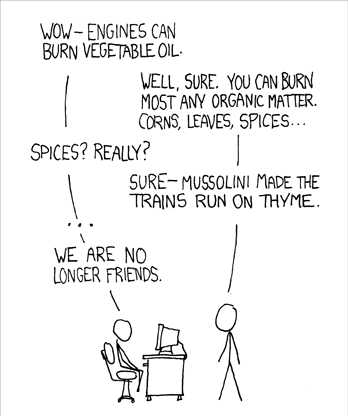Exploring Fascist Rome
Since we are now approaching finals week at the Centro and have finished all of the normal course material, today we had a chance to explore a whole different side of the Roman city: its Fascist period. Everyone knows Mussolini for his role in forming modern fascism, his rise to Italian Prime Minister then il Duce, and of course his great hats.

While Duce (which translates to leader) Mussolini was responsible for serious public building projects that sought to transform the ancient city. Rome had grown organically from its beginnings around its many hills, so no orthogonal grid plan governs the way that the roads are laid out. Anyone that has been to Italy knows that trying to take a shortcut is dangerous since the road could curve in any direction at any time and throw you way off course. Mussolini tried to fix this problem by building up new areas that would be better planned out for a modern city with cars and many more people than had ever before lived in Rome.
One of his main areas that he created was the Esposizione Universale Roma, or EUR area south of the city center that was originally planned for the 1942 world’s fair. The architecture here is typical of the fascist era and features Classical elements like lots of white travertine and column structures, but strips all of the decoration from them creating a very stark and intimidating view, perhaps suitable to the authoritarianism Mussolini aspired to.

While in EUR, we vistied the Museo della Civita Romana, which houses plaster casts of some of Rome’s most important artwork, including the friezes from the Columns of Trajan and Marcus Aurelius. It also houses a model of the city in the year 300 CE that shows in detail every building within the city center. Normally museum goers view the model from a balcony above, but with the Centro we got access to the lower level so we could walk right up to the model itself. This totally sounds really nerdy, but believe me its cool.

After this, we split into groups to explore various fascist monuments that we would then present to the other groups later. My group went to the Foro Italico, which was once the Foro Mussolini. He created his own forum like ancient emperor’s had to assert his leadership of the city and built the Stadio Olympico for the Fascist Male Academy of Physical Education (again with the facism.) He also placed a large obelisk that reads plainly “Mussolini Dux” or “Mussolini Leads” as a not-so-subtle reminder of the fact that he was in charge.
Seeing this side of Rome definitely gives me a new perspective on the city. I am usually so focused on the ancient and maybe Renaissance history of the city that the fascist seems more of a hinderance that just serves to make some parts of the city kind of ugly and a constant scapegoat for destruction of archaeological ruins to make room for the modern city. Although Italy’s fascist period certainly wasn’t a great time to live in Rome, seeing the impact of the fascist architecture and building projects makes me realize that it just adds to the diversity of Rome’s monumental history. And it’s important to remember that modern people live in Rome who want modern things. It may sound silly and obvious, but when you get deep into discussions about how important preserving the past is it can be easy to condemn all new subway lines that might interfere with an unknown ancient temple. To me, the fascist architecture now serves as a constant reminder of the careful balance between preserving the past and allowing the city to move forward, a problem we rarely think about in the US where the land’s history before about 500 years ago is mostly ignored.
Might have rambled a bit, but as I come to the end of my semester here in Rome I have a lot of thoughts about the city that I’m eager to share. To add some levity, I’ll end with a great Mussolini comic courtesy of xkcd.


